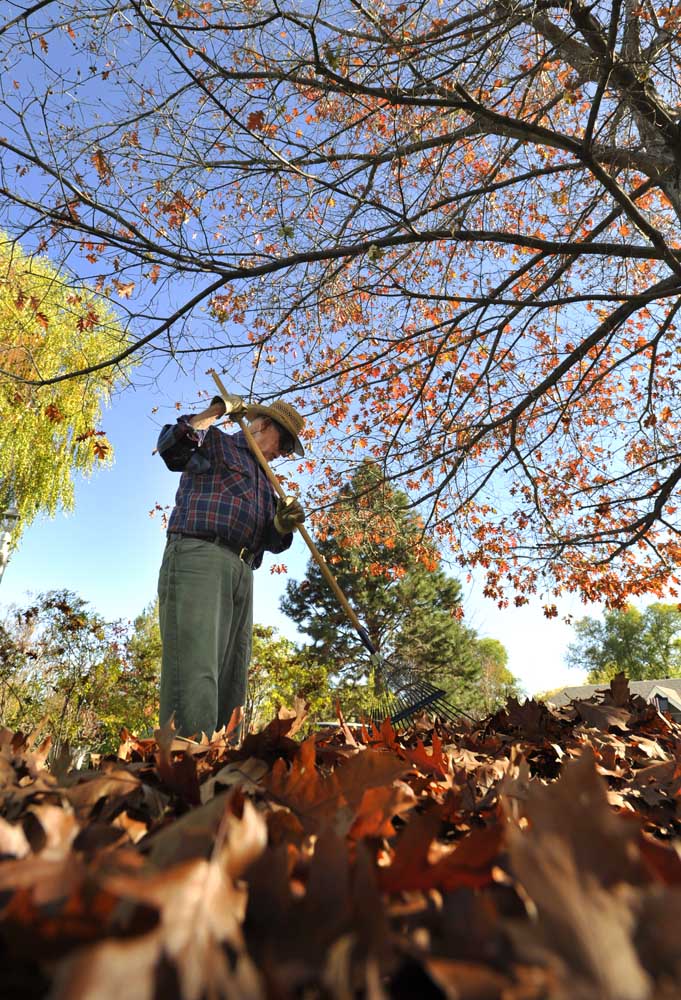Fall for gardners: raking, mulching, trimming and more
Published 1:45 pm Tuesday, November 3, 2020

- Get ready to rake the leaves — fall is here.
Have you noticed that Central Oregon doesn’t follow a prescribed fall weather pattern? I am being just a tad bit sarcastic. The weather is nice and balmy, warm enough to shed the sweatshirt. Some days there’s a killing frost that levels everything green. But wait 24 hours and the weather is back to short sleeves and shorts. One thing you can say is that it keeps gardeners on their toes.
I have to admit that Mother Nature crept up on me this year, and I did lose harvesting at the end of the tomato production. There’s no need for tears, my freezer is full of a selection of marinara sauces and the pantry self is holding jars of savory Tuscan Tomato jam. Now, I have to decide which fresh tomato soup recipe to use for the last of the last.
The plants have been pulled out and added to the yard debris container. My backyard compost bin provided enough compost to cover one of the 2-by-8 foot wooden raised beds with a 3-inch layer. It took approximately three-plus years to decompose leaves and plant material which proves that composting in our climate takes time, patience and a strong arm to routinely turn the debris.
Taking one fall chore at a time makes life in the fall more manageable instead of trying to do it all in one day. I do leave the growth on perennials especially if they have seed pods. Also the growth helps protect the root systems, especially if we don’t have a heavy snow covering.
A hint that I put into practice this year is to clean up the area nearest the house first. Tidying the area along the most traveled walkway reminds us we can do this — just a little at a time. For me, after the big tomato cleanup, was pulling the annual plants from the containers on the front steps. Next will be cleaning up the crabapples that have fallen on the driveway and adding them to the yard debris container.
The trees in my yard, aspen and cottonwood, have lost their leaves. I had hoped the wind would shift direction and Mother Nature would reposition them somewhere else. My hopes were in vain. Now it’s time to get the rake out. If I had a mulching lawnmower I would make a quick run through.
Leaves left on the ground can weaken a lawn by depriving it of light and possibly causing yellowing of the blades. Where layers of leaves overlap a barrier to any moisture we might receive, they will prevent the moisture from being absorbed. Considering that my irrigation shut down early this year it is especially important that I rake the leaves. And then hope for a wet fall and snowy winter.
It will undoubtedly be more than a one-day chore as leaf drop can continue over a span of a month if you consider mine, and those leaves from nearby trees, which end up being mine.
So what will you do with all your rescued organic matter? If you have a leaf shredder that reduces the volume significantly. If you are a vegetable grower and have space you could use the trench method of composting. Dig a trench about a foot deep and long enough to accommodate a 4 inch depth of fallen leaves. Set the soil aside.
Lay the collected leaves in the trench. If you have grass clippings, all the better, mix them in for nitrogen action. If you have no clippings sprinkle in some leftover high-nitrogen fertilizer (the first number needs to be the highest). Cover over with dug soil. You could use a pitchfork to punch holes in the trench to admit oxygen and water. Come spring, you may be amazed at the earthworm activity.
For those who know me, you know that I like new ideas and experimenting so don’t be surprised if I want to try a new hint I read.
I don’t have a leaf shredder. The hint is to start with a large trash barrel. Put the leaves in a trash barrel and then using a string trimmer, known as a weed wacker at my house, use it as a hand mixer reducing the volume.
The only problem I see is that I am short, and I wonder if I have the leverage to make it happen without falling into the container. Stay tuned.








